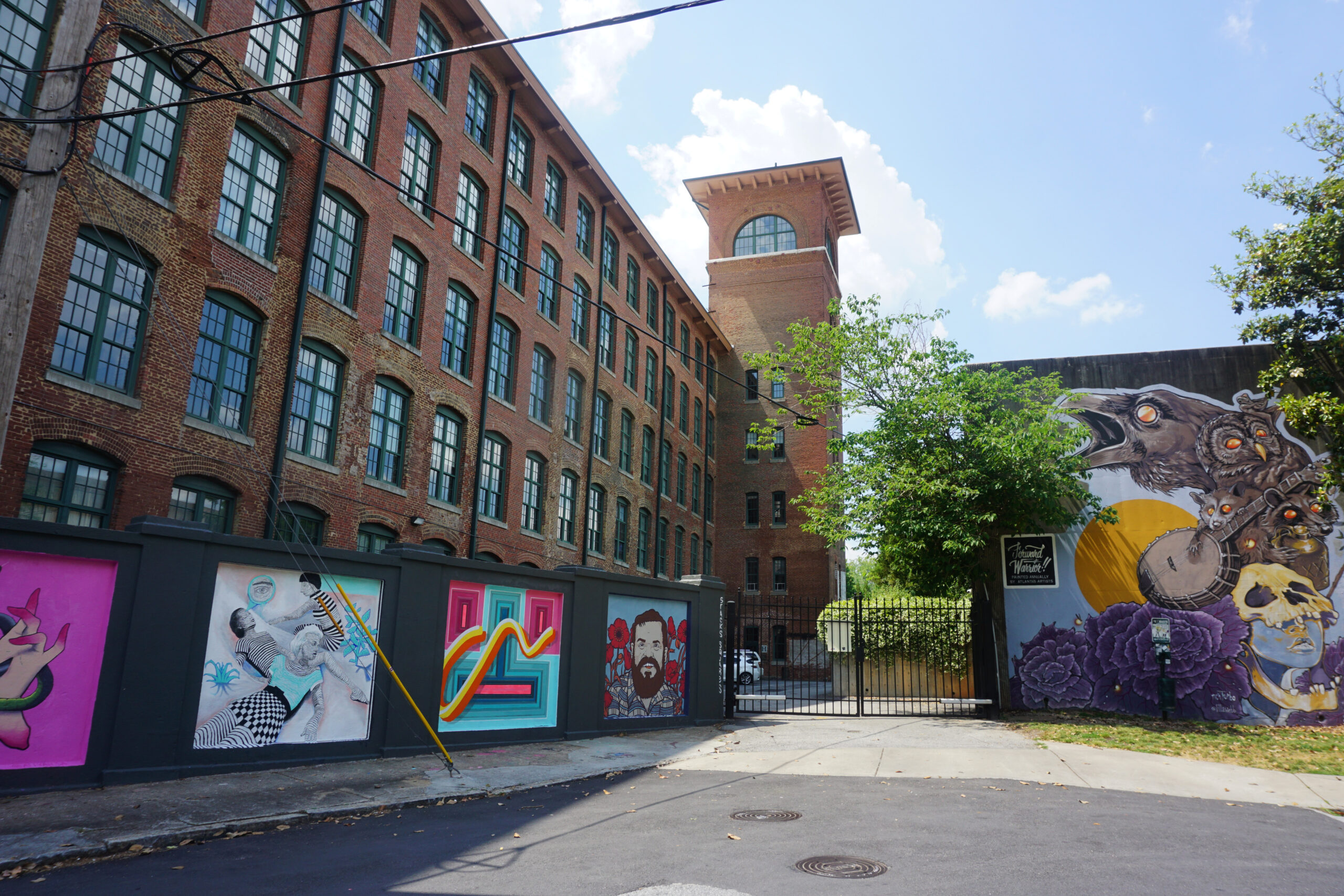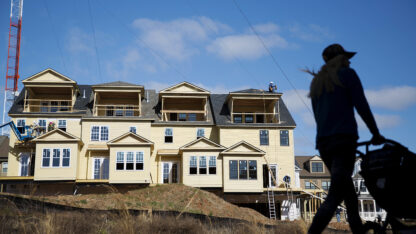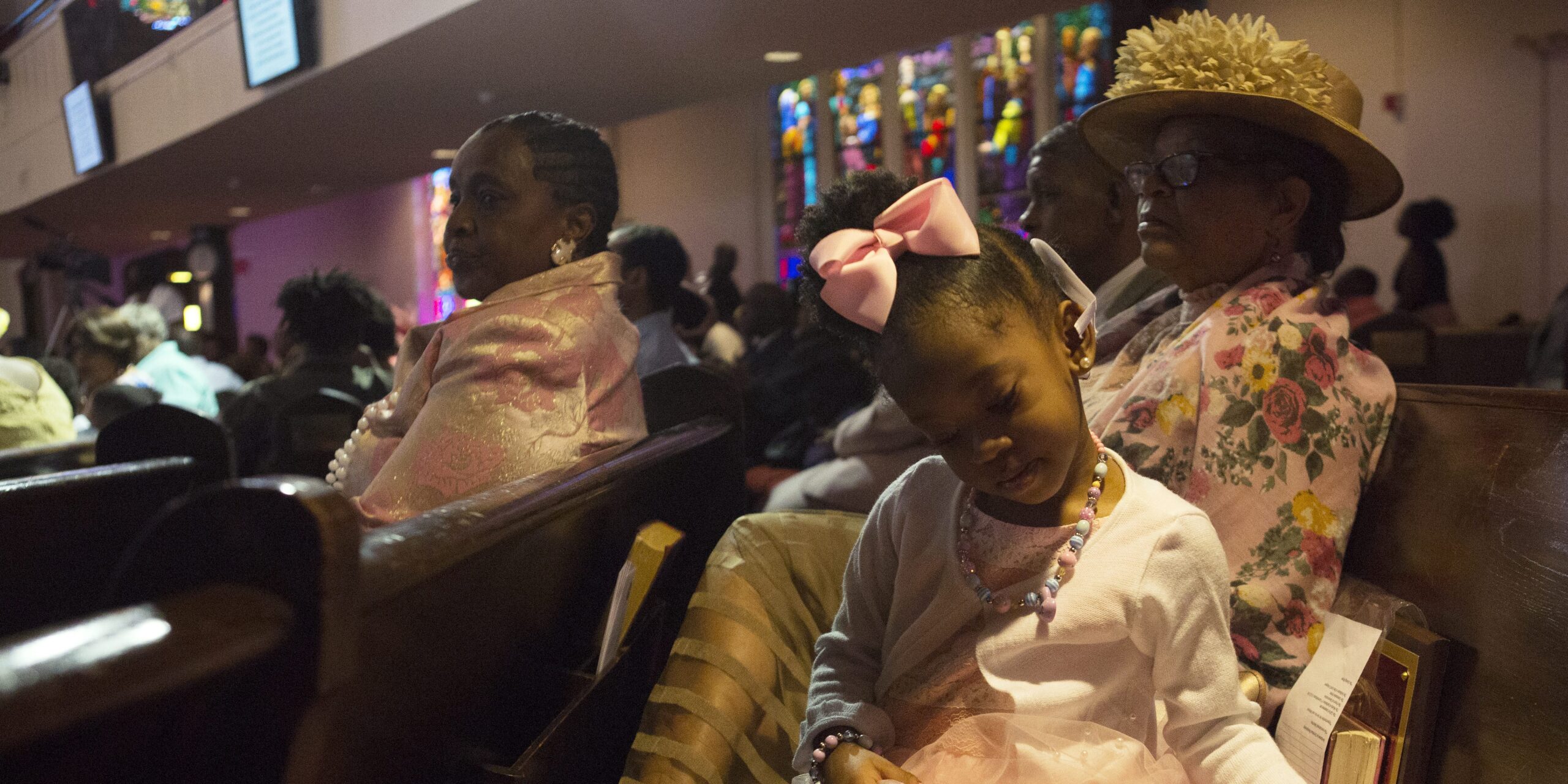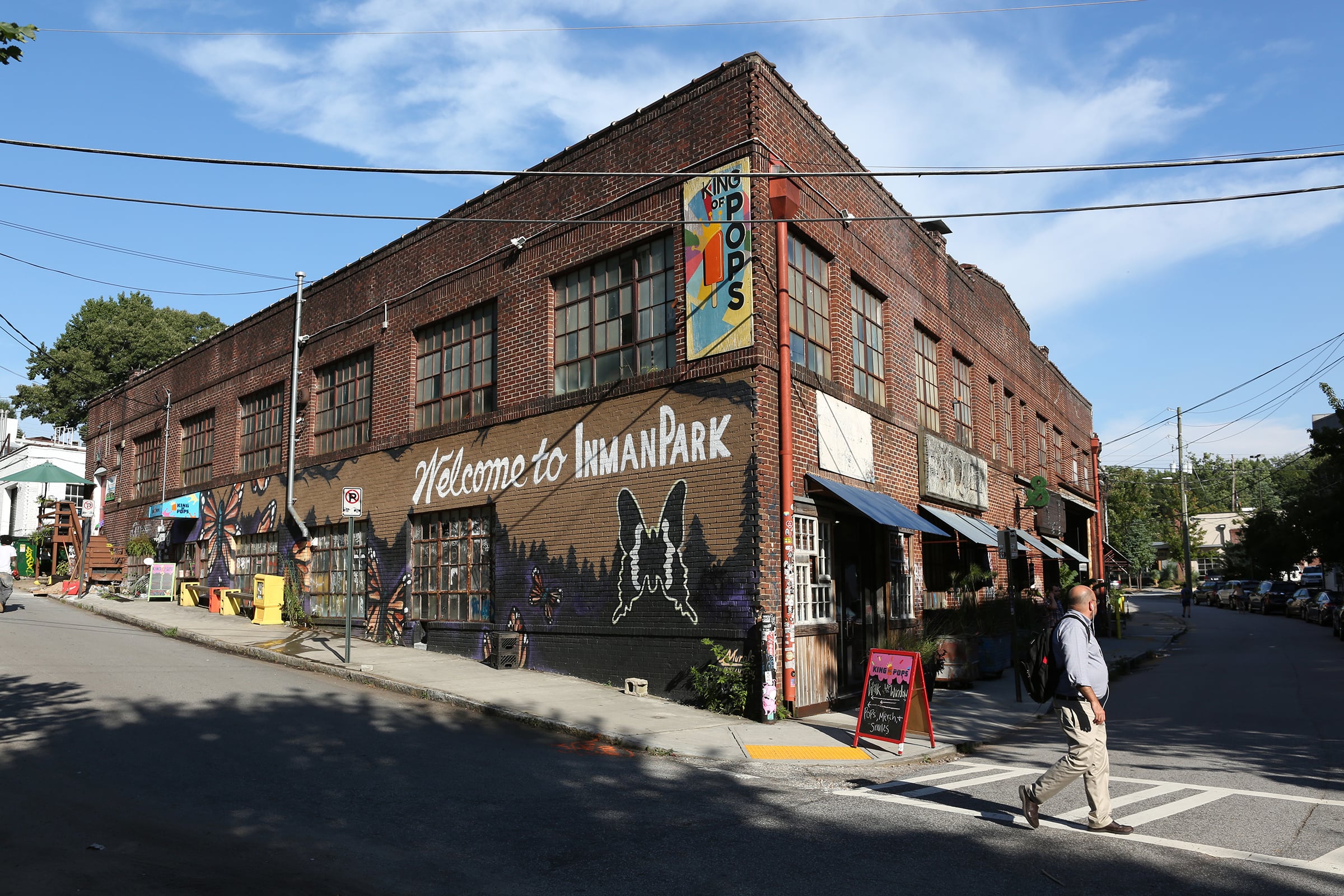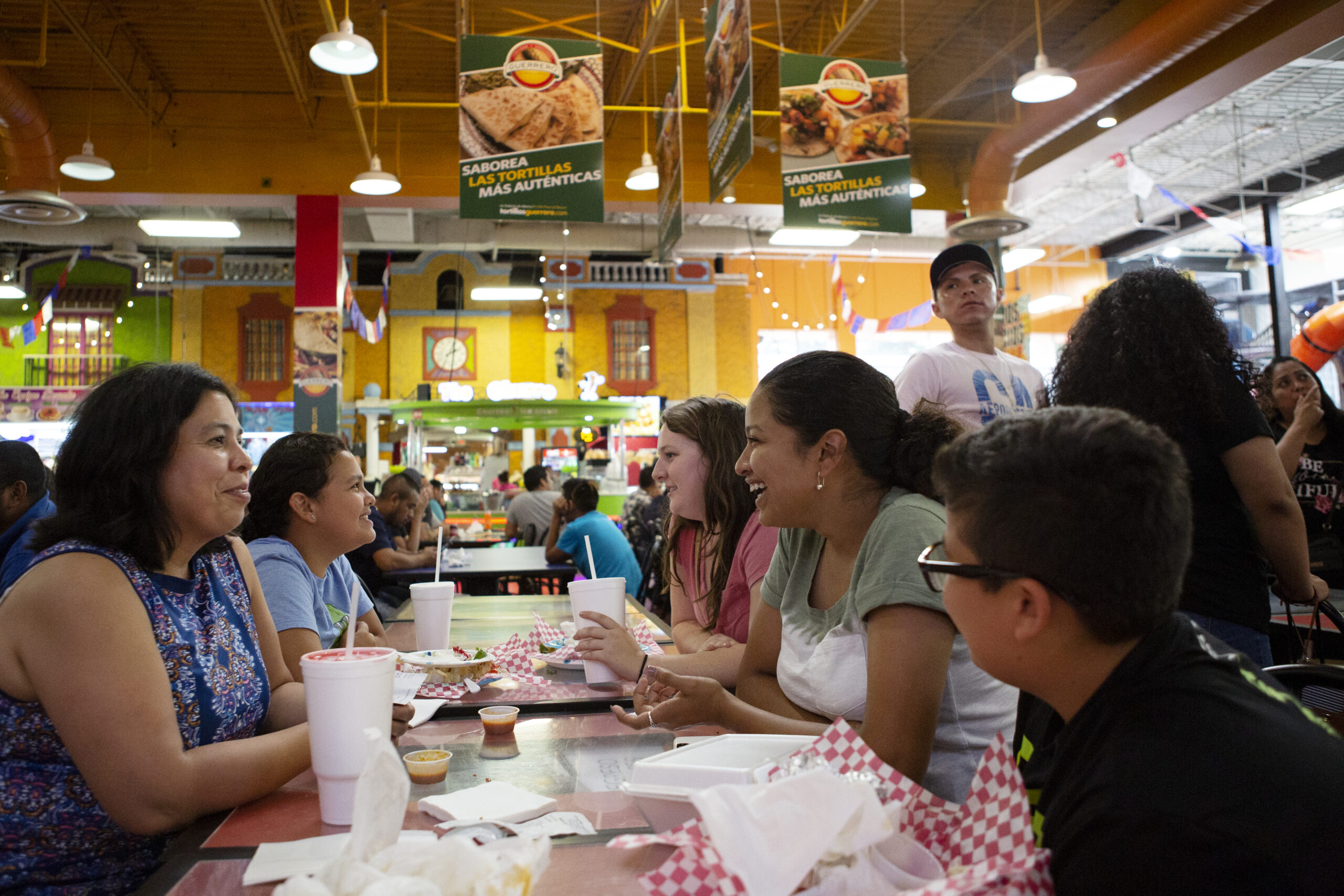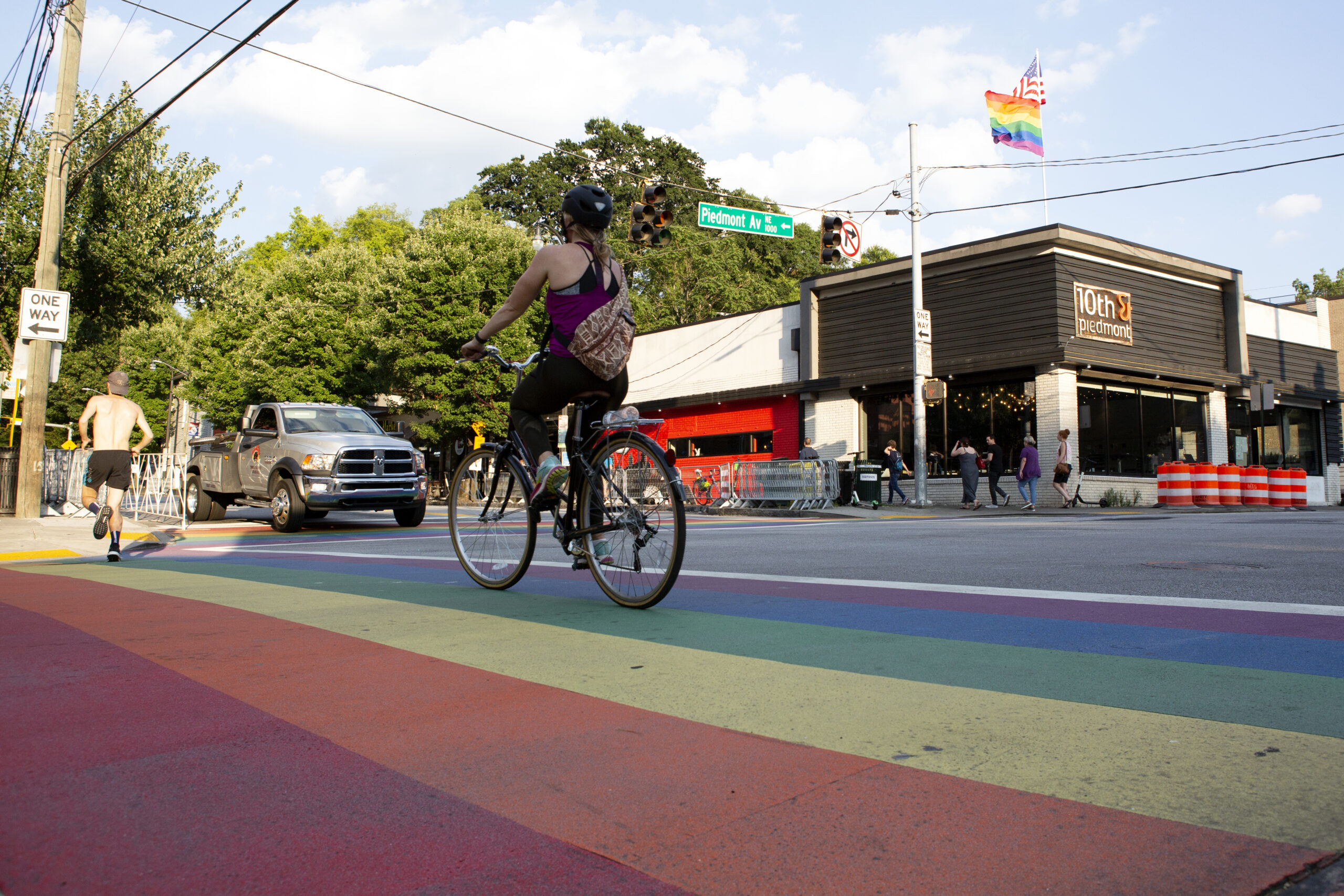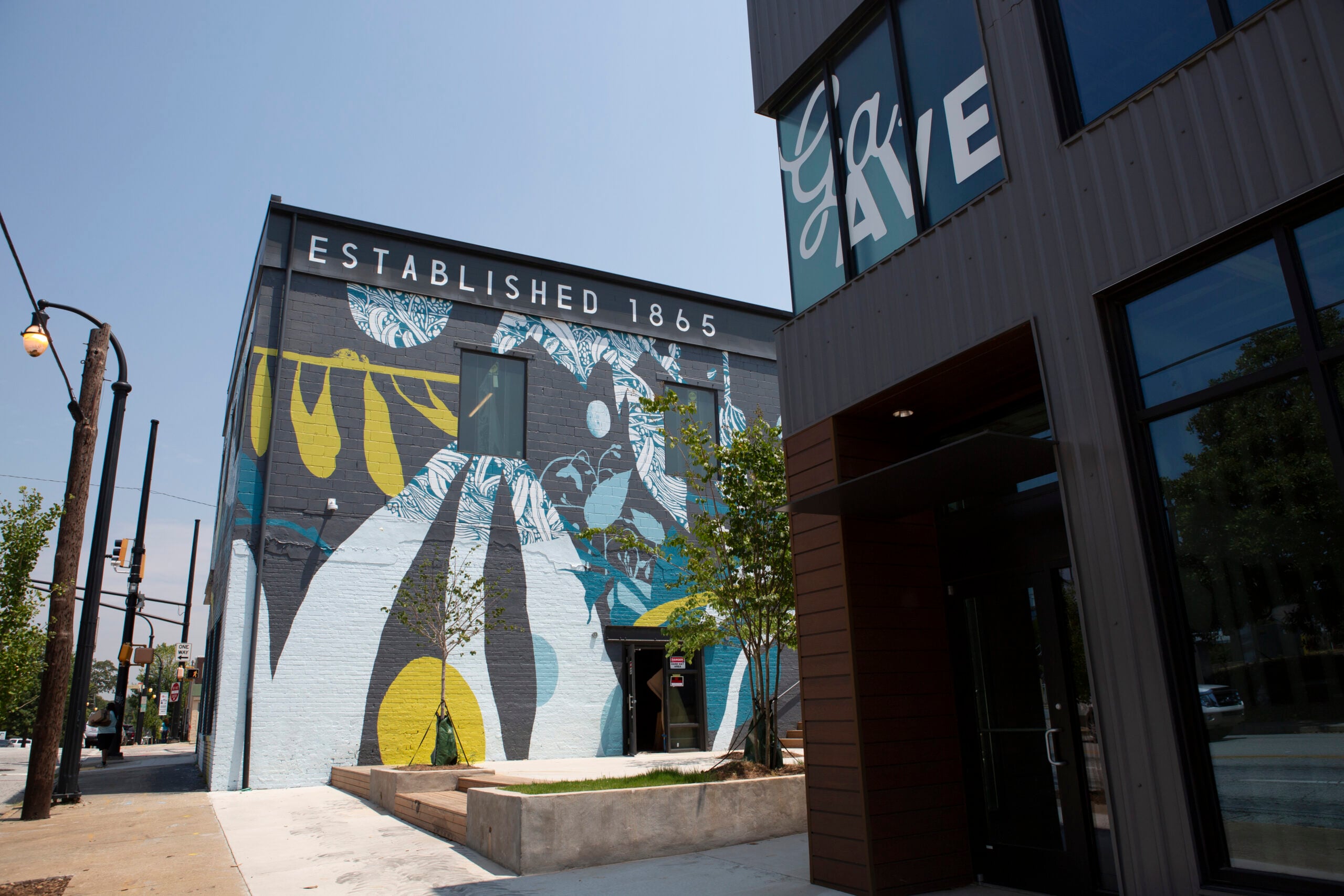The hustle of East Atlanta slows to a near halt on a Sunday afternoon, as people come together for a late brunch at The Earl.
The crowd gathers around the bar and wooden tables, chasing hair-of-the-dog Bloody Marys, with a side of lox bagels and stories from the night before.
All six members of local band Little Tybee huddle in the corner, playing the soft soundtrack of recovery behind frontman Brock Scott’s acoustic guitar and falsetto vocal.
For musicians coming up in the music scene of East Atlanta, playing their first show in the back room of The Earl is a milestone of growth and professionalism.
“The crowd is much more raw than other venues of similar size in the city, and it has a grit to it that is truly very Southern, but outsider at the same time,” said Scott, a regular patron and performer at the restaurant and venue.
“The Earl has pulled off a rare thing in that its appeal is just as strong with or without music, and the characters it attracts are as diverse as they come. It’s a strong cornerstone of East Atlanta Village, and Atlanta as a whole.”
East Atlanta Village is a modern food and art destination frozen in a ’90s punk-era hangover. Scrappy music venues, restaurants of every cuisine and quirky stores line the streets, decorated by layers of hand-painted murals and graffiti on every wall.
The neighborhood has outgrown its reputation as Little Five Points’ spunky kid brother, cultivating a tight-knit community of young people and old-timers who work, eat and play music together on a daily basis — all on the same street.
One of Georgia’s bloodiest Civil War battles was fought at the intersection of Flat Shoals and Glenwood avenues, the two major streets of East Atlanta that converge in the center of the Village.
Today, the people of East Atlanta are fighting again to stay weird in the face of gentrification and condo-culture. Against all odds, they seem to be winning, for now.
The Heart Of The Village
East Atlanta Village bleeds art, and many in the community would say that a small music venue, restaurant and bar called The East Atlanta Restaurant and Lounge is the heart of it. But most people just call it The Earl.
“We have music here at least five nights a week — everything from young, indie-rock bands to downward-spiraling punk bands who don’t draw much attention anymore,” said John Searson, The Earl’s co-owner.
“The Earl is a three-headed monster between the music, bar and kitchen. We don’t take any cover money from the bands here, so all the money we make from the crowd buying food and drink from us goes right back into the business,” said Searson, who runs The Earl with his business partners, Donnie Parmer and Shane Pringle.
When The Earl first opened in July 1999, there wasn’t much of a public art scene in EAV. A bakery, a grocery store, a diner — “old-school stuff,” as Searson called it — and one ill-fated music club called The Echo Lounge.
For the most part, the art scene was dominated by Little Five Points, just north of East Atlanta. The area was experiencing an economic growth, bringing in more residents, commercial businesses and artists.
Muralists decorated the town while rising musicians like Pearl Jam and Smashing Pumpkins performed at The Point, one of the most popular small venues in the city for young bands.
“Opening a business in East Atlanta Village at the time was pretty cheap, but there wasn’t much here to bring in customers,” Searson said.
He said things really picked up when The Point closed in 1999 and bands were looking for somewhere to play. The Earl opened that same week and hit the ground running with a number of those shows, Searson recalled.
The Earl quickly became a key music and food destination in East Atlanta, priding itself in the quality of its food and beverage service.
The front of the house draws a respectable lunch and dinner crowd most days, and the black bean burger will blow any greasy bar snack out of the water.
The bar keeps a seasonal rotation of local craft beer, balanced with a seemingly bottomless oasis of 16-ounce cans of Pabst Blue Ribbon — the hipster’s favorite mainstream beer, recognized in a gigantic mural emblazoned on the side of the building.
“I think The Earl could go on for quite a while, but it’s a young man’s game and we’re open late at night pretty much 365 days a year, including holidays,” Searson said.
“The last 20 years in East Atlanta could’ve gone in any direction. But it’s nice to see young people moving in and having pride in their neighborhood.”
The Battle Of Atlanta
In the summer of 1864, Union Maj. Gen. William Tecumseh Sherman was marching eastward through the American South, defeating Confederate armies and taking over cities as he made his way toward Georgia.
Atlanta was a key railway and supply base for the Confederacy, and more than 40,000 troops were garrisoned there under Lt. Gen. John Bell Hood. Sherman ordered three armies totaling fewer than 35,000 Union troops to invade the city from different directions on July 22, with the attack on East Atlanta led by Maj. Gen. James B. McPherson.
McPherson charged his troops into East Atlanta through Decatur, engaging Confederate forces right in the heart of what is now East Atlanta Village, but was ultimately outflanked by Confederate infantry.
McPherson himself was shot and killed near Leggett’s Hill, just north of East Atlanta Village, making him the second-highest ranking Union officer to be killed in action during the war.
The nearby McPherson Avenue, which intersects with Flat Shoals Avenue, is named for him.
The battle was a crushing defeat for the Confederates, who suffered more than 5,500 casualties.
Hood surrendered Atlanta to Sherman a month later, dealing a major blow to the Confederate war effort. The capture of Atlanta was seen as a major victory for President Abraham Lincoln, who was re-elected into office shortly after.
The B*ATL organization hosts tours of the battlefield several times a year, where tourists can walk along the battlelines of one of the most significant battles of the Civil War.
Octopus, Beer And Hard Work
A hip gastropub called Argosy opened along East Atlanta’s main drag in 2013, offering 32 beer taps and a slightly higher-end food menu. The charred octopus entree is legendary, and the bar taps constantly rotate to keep up with local brewers’ relentless production of craft beer.
Artists and musicians tend to gravitate toward Argosy because they like the music and the atmosphere, and because it’s a supportive environment.
“Both the executive chef and chef de cuisine are extraordinarily talented and passionate about their work,” said Tymb Gatz, who started working in the kitchen and front of the house at Argosy in 2015.
“Always try the specials, and the octopus. If you like beer, there’s not a better place in the city I can think of that cares more about it than Argosy.”
Gratz plays lead guitar in local indie-rock bands Rose Hotel and Karaoke, who often perform at The Earl and 529 — a smaller bar-venue in the Village.
Many of Gratz’s friends in local bands like Shepherds, Material Girls, Omni and Dot.s have worked various jobs in the restaurant at one time or another.
And Brock Scott of Little Tybee made a large octopus sculpture displayed in Argosy’s back room.
“It’s understood that some of us have artistic endeavors that we value a lot, and management respects us for it,” Gratz said.
“The deal is you go do your thing, and then you come back and work hard. A touring musician can sometimes take weeks or months off and still have a job as long as they do it right and work hard.”
East Atlanta Village is home to a diverse range of restaurants. Vietnamese and Korean cuisines are prominent, but specialized menus bring in Southeast Asian and African cuisines as well. These are some of the food options in the area:
- The Global Grub Collective: The Global Grub Collective is the hub for cuisine in East Atlanta Village, housing a rotating cast of food stands and popups with staple dishes from all over the world. The versatile food hall gives guests the choice of several different menus within the establishment, so someone with Vietnamese pho may join their friend eating a Moroccan lamb shank at the same oversized, picnic-style table. The stands are open on different days and times, and some menus even change daily, so the experience is never the same.
- Gaja Korean Bar: A casual dining and cocktail bar tucked into an alley in the middle of EAV, serving a menu of Korean bar food alongside a full bar of Korean cocktails, beer and wine.
- EAV Thai and Sushi: Thai-Fusion and traditional Thai cuisine with Japanese sushi and a full bar with Thai cocktails. Offers dollar-sushi specials on Tuesdays.
- So Ba Vietnamese Restaurant / Octopus Bar:This traditional Vietnamese restaurant with renowned pho soup and bun dishes transforms into the hip and punkish Octopus Bar from 10:30 p.m.- 2:30 a.m. every day except Sunday. Octopus Bar is well known in Atlanta’s late-night bar scene for its cocktails and finely crafted small plate menu.
Art Covers The Walls
East Atlanta Village itself is a canvas for local mural and graffiti artists.
Some murals are political, and some are just surreal.
For artists like Fabian Williams, the work is a chance to provoke people to think deeper into societal issues.
“In Atlanta, people respect the truth when they hear it, even if it’s uncomfortable,” Williams said. “Visual art conveys a symphony of opinions in ways that can’t be expressed in just a few words, especially when people in power are speaking a different message than the whole truth.”
Williams has lived in Atlanta since 2001, and has spent his life in pursuit of artistic expression through a variety of mediums. Sometimes working under the moniker “Occasional Superstar.”
His art usually speaks to issues of racial and financial inequality.
Williams is known for his art in locations all over Atlanta, notably for a series of murals dedicated to NFL quarterback and activist Colin Kaepernick, but pedestrians in East Atlanta might recognize his lesser-known depiction of American political parties on the southern wall of The Weave Stop and Mahogany Me.
Even four years after painting that mural, Williams believes the societal commentary it depicts still applies. East Atlanta is old-school neighborhood in Atlanta, still holding onto its gritty vibe, as much of the city faces development and gentrification.
An Uncertain Future
Locals wonder what will become of The Madison Theater, a movie house built in the 1920s that has stood derelict and looming in the center of the Village for decades.
After a long history moonlighting as a glorified storage unit for unused mattresses and furniture, the theater is known better now for being closed than for showing films.
“Time has gone by so fast, and everyone around here is going to have a different opinion if it’s better or not,” John Searson, of The Earl, said. “We don’t really have as much retail as some other places, but as long as people keep coming here for the food and music, I think we’ll be OK.”
The large theater has potential for either the arts community or the rapidly encroaching gentrification that so many locals fear will eventually swallow their Village.
While the theater sits empty in the heart of town, apartments and condos spring up on the edges, filling up with new people and attracting potential for more commercial businesses.
“The businesses that operate (here) are what give the neighborhood its identity and appeal,” Brock Scott said. “For now, I think the neighborhood is mostly safe in its charm.”
Times are changing in Atlanta as the old guard ages and moves on, making way for a new generation of young artists and hustlers.
Only time will tell if East Atlanta Village will solidify as the scrappy arts community it is today or be ushered into the era of change.

